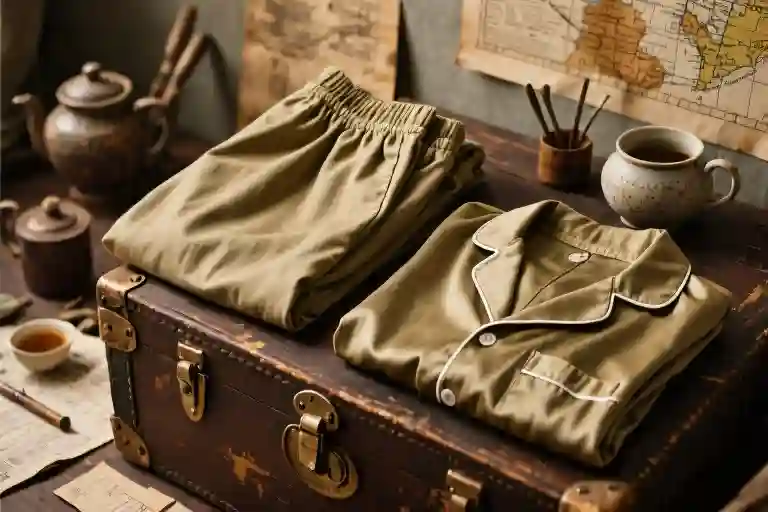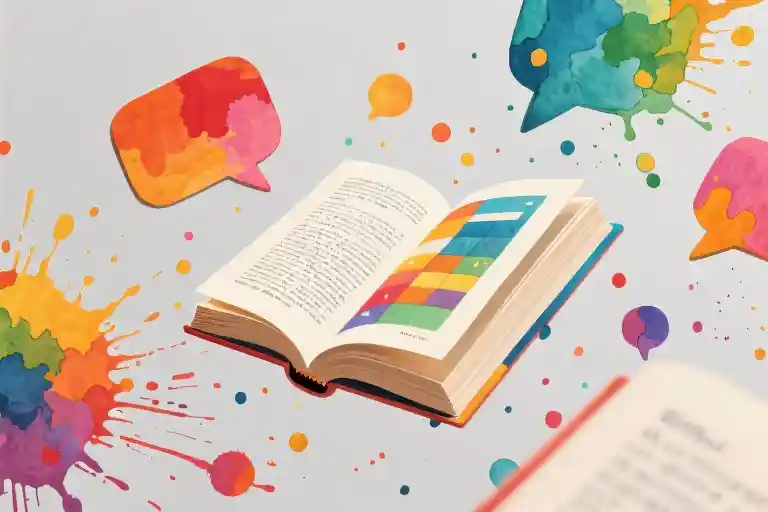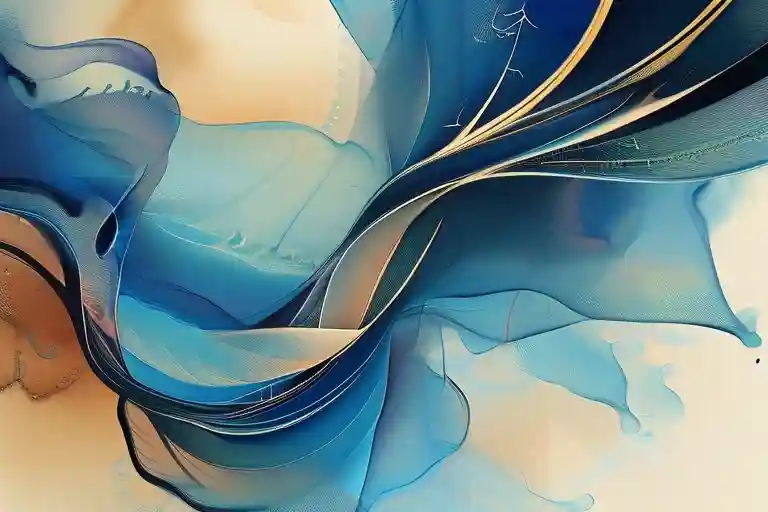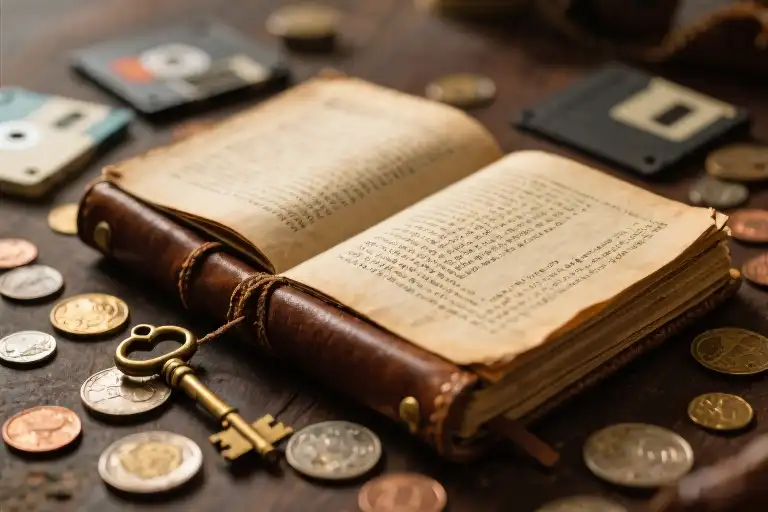The fabric of language holds hidden histories, and few examples illustrate this better than the words we use every day without a second thought. Consider the simple act of slipping into pajamas at night or choosing a pair of khaki pants for work – these mundane choices actually connect us to centuries of cultural exchange across empires.
About 15% of clothing-related terms in English trace their origins to South Asian languages, a linguistic legacy of colonial encounters. Two particular words – pajama and khaki – tell especially rich stories about how everyday vocabulary carries the imprint of history. What began as practical garments in one culture became global staples, their names traveling across languages as the items themselves crossed borders.
These terms didn’t just randomly enter English; they arrived through specific historical channels. The British colonial presence in India served as a linguistic bridge, introducing countless Urdu words into English between the 18th and 19th centuries. While many know about curry and bungalow, fewer realize that pajama and khaki share this heritage. Their journey from Urdu to English reveals how clothing terms often outlast the political systems that spread them.
Pajama comes from the Urdu ‘pāy-jāma,’ itself borrowed from Persian, combining words for ‘leg’ and ‘garment.’ Khaki stems from the Urdu word for ‘dusty,’ derived from Persian ‘khāk’ meaning soil. That these comfortable home clothes and earthy-toned fabrics bear names rooted in military and domestic life from another continent speaks to language’s quiet power to preserve cultural memory.
As we examine these words more closely, patterns emerge about how languages borrow and adapt. Clothing terms tend to travel with the items they describe, often keeping their original pronunciation but sometimes shifting meaning. The story of how pajamas evolved from loose Indian trousers to coordinated Western sleepwear, or how khaki transitioned from military camouflage to office casual, shows words accumulating new layers while never quite shedding their origins.
The Linguistic Archaeology of Pajamas and Khakis
Few realize that the words we use for our most mundane clothing items carry centuries of cultural cross-pollination. The journey of “pajama” and “khaki” from Urdu to English reveals how language absorbs fragments of history through everyday objects.
Etymology Unstitched
The word “pajama” unravels as pāy-jāma in Urdu, stitched together from Persian roots meaning “leg garment.” This wasn’t just sleepwear – originally loose trousers tied at the waist, worn across South Asia long before British colonizers adopted them as nightclothes. The transformation mirrors colonial domesticity: what was practical daywear in hot climates became exoticized loungewear in Victorian bedrooms.
Dust to Dominance
“Khaki” tells a grittier tale. Derived from the Urdu khāk (soil) with a color-denoting suffix, its adoption by the British Indian Army in 1848 turned a local descriptor into a global phenomenon. Military dispatches from the Punjab recorded how dust-colored uniforms provided tactical advantage – a practical innovation that accidentally preserved an Urdu word in international vocabularies.
Documenting the Journey
The Oxford English Dictionary’s 1850 entry for “pajama” notes its use by East India Company officers, while War Office archives reveal khaki’s formal adoption occurred during the Second Anglo-Sikh War. These bureaucratic records became linguistic time capsules, capturing the moment everyday words began their global migration.
What’s fascinating isn’t just the origins, but the metamorphosis. Neither term retained its original meaning completely – pajamas evolved from solitary trousers to coordinated sets, while khaki expanded from military camouflage to fashion staple. This lexical evolution continues today as designers reinterpret these colonial-era borrowings for contemporary wardrobes.
The next time you slip into pajamas or don khakis, consider the hidden journey woven into their fabric – from Persian courtyards to British barracks, finally resting in your closet as unassuming witnesses to cultural exchange.
The Uniform Revolution: How Khaki Conquered the World
The story of khaki’s global dominance begins not on fashion runways, but in the dusty barracks of colonial India. When British officers first adopted the earthy-toned fabric for military uniforms in 1848, they unknowingly set in motion a linguistic and sartorial revolution that would span centuries.
The Sindh Regiment Experiment
Historical records from the Peshawar Archives reveal how the British Indian Army’s Sindh Regiment became khaki’s testing ground. Facing the harsh Punjab summers, soldiers dyed their white cotton uniforms with tea leaves and local mud, creating camouflage that blended with the arid landscape. This improvisation marked the birth of modern military utility wear – a far cry from the bright red coats of European battlefields.
Levi Strauss & Co.’s wartime production logs from 1917 show how khaki transitioned from battlefield to workwear. Their entry reads: “Received War Department contract for 50,000 pairs of khaki drill trousers…” – the humble beginning of what would become cargo pants and chinos. The fabric’s durability made it ideal for both trench warfare and railroad construction, cementing its place in global wardrobes.
Linguistic Camouflage
What’s often overlooked is how language adapted alongside the fabric. Military dispatches from 1857 document British officers using “khaki” as both noun and adjective – “the khaki uniforms” becoming “the khakis” within a single campaign season. This grammatical fluidity mirrors how the color itself blurred boundaries between military and civilian life.
The term’s journey from Urdu to English dictionaries reveals cultural negotiation. Early 20th-century editions of the Oxford English Dictionary cautiously defined khaki as “a dust-colored cloth of Indian origin”, while modern versions simply state “a pale brownish-yellow color” – the colonial specificity erased through common usage.
From Battlefields to Boardrooms
Photographs in the Imperial War Museum trace khaki’s social ascent:
- 1890s: Worn only by soldiers in tropical postings
- 1920s: Adopted by British explorers as safari wear
- 1950s: Rebranded as \”tan\” for American business suits
- 2020s: Featured in 78% of fast-fashion autumn collections
This evolution reflects more than changing styles – it’s a case study in how colonial practicalities become global vernacular. The same fabric that once hid soldiers now helps office workers blend into corporate landscapes, proving khaki’s enduring genius as the ultimate social camouflage.
The Global Journey of Pajamas and Khaki
What began as functional garments in South Asia transformed into global fashion staples, their meanings shifting across continents. The pajama’s evolution from loose sleeping trousers to coordinated loungewear, and khaki’s transition from military camouflage to high street fashion, reveal how colonial encounters reshaped everyday vocabulary.
When Pajamas Crossed Continents
The original pāy-jāma referred simply to drawstring trousers worn for sleep in South Asia. British colonists adopted them for nighttime comfort, but Western interpretation added matching tops, creating the pajama set we know today. This sartorial reinterpretation mirrors cultural translation – where practical garments became symbols of domestic leisure. Department store catalogs from the 1920s show how retailers marketed them as exotic yet respectable homewear, smoothing their entry into mainstream wardrobes.
Khaki’s Chromatic Diplomacy
That dusty hue named khaki traveled through British military manuals before reaching civilian closets. Military archives document its strategic advantage – blending with Indian landscapes while concealing dirt. Post-WWII, surplus stores flooded with khaki uniforms that students and workers repurposed, democratizing what was once specialized gear. Pantone’s standardization (16-0728 TPX) later cemented its status as a neutral, though color historians note modern khaki leans yellower than its original earthier tones.
Dictionary Detectives
Lexicographers have chronicled these semantic journeys:
- Oxford English Dictionary‘s 1933 entry defined pajamas strictly as “sleeping trousers”
- By 2000, it included “matching top” and extended meanings like “pajama day” at schools
- Khaki’s 19th-century definitions emphasized military use, while contemporary entries highlight its fashion applications
This lexical flexibility shows how clothing terms absorb cultural contexts. When you slip into pajamas or khakis today, you’re wearing layers of linguistic history – each thread spun from colonial encounters, practical adaptations, and the endless reinvention of global style.
Fashion DNA: How Traditional Words Reinvent Themselves
The journey of ‘khaki’ from military camouflage to runway staple reads like a sartorial Cinderella story. What began as a practical solution for British soldiers blending into Indian landscapes now struts down catwalks in Milan and New York. The Pantone Color Institute reports khaki shades appearing in 23% more Spring/Summer 2024 collections compared to pre-pandemic seasons, signaling its transition from utilitarian to urbane.
Designers have been deconstructing khaki’s martial origins with fascinating results. At last year’s Met Gala, a custom Burberry ensemble reinterpreted colonial-era uniforms through avant-garde tailoring – the structured shoulders evoking military precision, while the fluid silk fabric whispered of cross-cultural exchange. This duality captures modern fashion’s relationship with etymological heritage: honoring roots while grafting new meanings.
Fast fashion retailers accelerate this semantic evolution. Zara’s recent ‘Khaki Reborn’ collection positioned the hue as gender-neutral loungewear, far removed from its battlefield beginnings. Their marketing copy cleverly sidesteps colonial connotations, instead emphasizing ‘earth-toned versatility.’ Such rebranding reflects how language and color meanings mutate in consumer culture.
Pajama dressing tells a parallel story of reinvention. Once considered strictly private attire, the silhouette now appears in boardrooms and cocktail parties. The 2023 Victoria’s Secret ‘Pajama Glam’ line demonstrates this shift – satin sets accessorized with statement jewelry blur the line between bedroom and bar. Interestingly, Western interpretations often add modesty layers absent in traditional South Asian pajamas, revealing how migrant words adapt to new cultural climates.
What makes these etymological evolutions remarkable isn’t just their staying power, but their chameleon-like ability to absorb contemporary values. The same khaki fabric that once symbolized imperial dominance now signals eco-consciousness in Patagonia’s sustainable collections. Pajamas, originally functional sleepwear, have become vehicles for self-expression through bold prints and personalized embroidery.
This linguistic-fashion symbiosis continues unfolding. Emerging designers like Priya Ahluwalia deliberately highlight colonial-era vocabulary in their collections, using garment tags to display word origins alongside care instructions. Such practices invite wearers to become active participants in language preservation – dressing not just in fabrics, but in living history.
Perhaps the ultimate test of these words’ metamorphosis lies in their detachment from source. When someone describes jeans as ‘khaki-colored’ or buys ‘pajama-style’ trousers, the original cultural context often fades into abstraction. This linguistic drift isn’t erasure, but proof of language’s organic growth – where words, like well-loved garments, stretch and reshape themselves through constant use.
The Hidden Journeys of Words
Language carries more than just meaning—it carries history. Those pajamas you slipped into last night and the khaki pants hanging in your closet have traveled farther than you might imagine. Their origins trace back to the Urdu language, whispering tales of colonial encounters and cultural exchange.
Etymology reveals how pajama evolved from the Urdu ‘pāy-jāma,’ itself borrowed from Persian, literally meaning ‘leg garment.’ Similarly, khaki comes straight from the Urdu word for ‘dusty,’ derived from the Persian ‘khāk’ (soil). These weren’t just linguistic imports—they arrived with material culture. The British Army adopted khaki uniforms during their time in India, while European colonists brought pajamas back as exotic loungewear.
What’s fascinating isn’t just the journey from Urdu to English, but how these words changed along the way. The original pajama referred to loose trousers tied at the waist, quite different from today’s matching sets. Khaki began as a practical military color before becoming a fashion staple. Their meanings shifted as they crossed borders, much like the people who wore them.
This linguistic legacy surrounds us. Next time you button a khaki shirt or fold your pajamas, consider the unspoken history in those stitches. Language preserves these quiet revolutions—how everyday objects become cultural ambassadors.
Your turn now: what surprising word origins have you encountered? Share those linguistic souvenirs from your own language. And if you enjoyed this etymological excavation, stay tuned—we’ll be unpacking the colonial histories behind words like bungalow and shampoo next.
As the writer Amitav Ghosh observed, ‘Words are the only relics left of forgotten encounters.’ Each borrowed term, from pajama to khaki, carries the faint imprint of civilizations meeting, clashing, and ultimately reshaping each other’s worlds.





